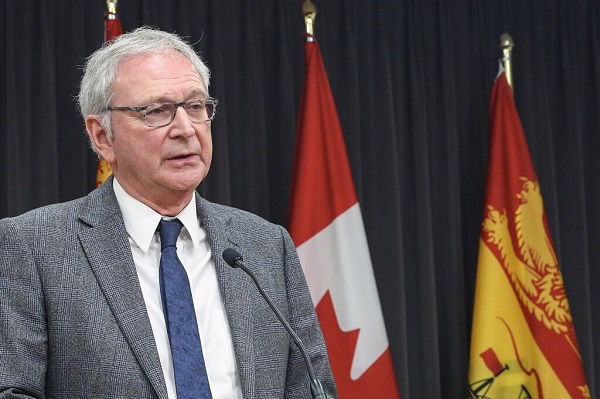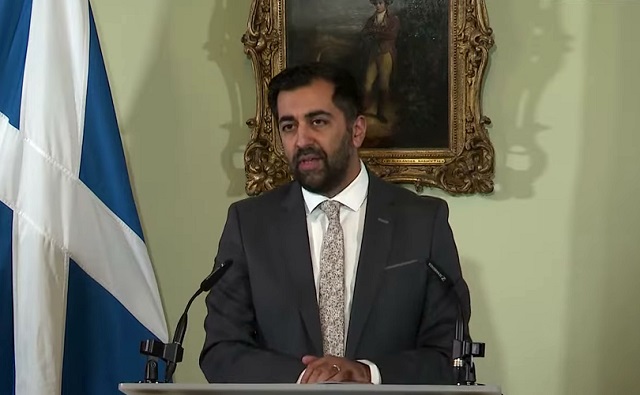Brownstone Institute
Uncovering the Army of Federal Censors

BY
I’ve recently posted twice on the case of Missouri v. Biden, in which the states of Missouri and Louisiana — along with four private plaintiffs (Jay Bhattacharya, Martin Kulldorff, the non-profit Health Freedom Louisiana, and yours truly) represented by the New Civil Liberties Alliance — are suing the Biden Administration for alleged free speech violations. Specifically, the executive branch of the federal government has been colluding with social media to censor any content on social media platforms — Twitter, YouTube (owned by Google), and LinkedIn (owned by Microsoft), Facebook and Instagram (both owned by Meta) — any content that questions, challenges, or contradicts the government’s covid policies.
While private companies might arguably choose to censor content on their platforms, the government cannot pressure or coerce private companies to censor disfavored content. Any such action is clearly a violation of the free speech guaranteed by the First Amendment of the US Constitution. As we articulate in our latest legal brief: “Under the First Amendment, the federal Government should have no role in policing private speech or picking winners and losers in the marketplace of ideas. But that is what federal officials are doing, on a massive scale.”
Our joint statement on discovery disputes legal brief, filed with the court and made public today, reveals scores of federal officials across at least eleven federal agencies have secretly communicated with social-media platforms to censor and suppress private speech federal officials disfavor. This unlawful enterprise has been wildly successful. Here are just a few excerpts from this document, which includes attachments of hundreds of pages of emails and other governmental and Big Tech internal communications as supporting evidence. These documents were obtained after we requested the following information on discovery:
Plaintiffs served interrogatories and document requests upon the Government Defendants seeking the identity of federal officials who have been and are communicating with social-media platforms about disinformation, misinformation, malinformation, and/or any censorship or suppression of speech on social media, including the nature and content of those communications. Plaintiffs also served third-party subpoenas on five major social-media platforms – Twitter, Facebook and Instagram (both owned by Meta), YouTube, and LinkedIn. On August 17, 2022, the Government Defendants provided objections and responses to the Plaintiff States’ discovery requests, and began a rolling production of documents that was completed on August 26, 2022.
Here’s some of we found so far in the documents that have been turned over, as described in our latest legal filing to the court:
Secretary Mayorkas of DHS [Department of Homeland Security] commented that the federal Government’s efforts to police private speech on social media are occurring “across the federal enterprise.” Doc. 45, ¶ 233. It turns out that this statement is true, on a scale beyond what Plaintiffs could ever have anticipated. The limited discovery produced so far provides a tantalizing snapshot into a massive, sprawling federal “Censorship Enterprise,” which includes dozens of federal officials across at least eleven federal agencies and components identified so far, who communicate with social-media platforms about misinformation, disinformation, and the suppression of private speech on social media—all with the intent and effect of pressuring social-media platforms to censor and suppress private speech that federal officials disfavor.
The discovery provided so far demonstrates that this Censorship Enterprise is extremely broad, including officials in the White House, HHS, DHS, CISA [Cybersecurity and Infrastructure Security Agency], the CDC, NIAID, and the Office of the Surgeon General; and evidently other agencies as well, such as the Census Bureau, the FDA, the FBI, the State Department, the Treasury Department, and the US Election Assistance Commission. And it rises to the highest levels of the US Government, including numerous White House officials. More discovery is needed to uncover the full scope of this “Censorship Enterprise,” and thus allow Plaintiffs the opportunity to achieve fully effective injunctive relief. Defendants have objected to producing some of the most relevant and probative information in their possession—i.e., the identities, and nature and content of communications, of White House officials and officials at other federal agencies who are not yet Defendants in this case because they were unknown when Plaintiffs served their discovery six weeks ago. Defendants have objected to producing discovery that would reveal both the height and the breadth of the federal “Censorship Enterprise.” The Court should overrule these objections and order Defendants to provide this highly relevant, responsive, and probative information.
Our brief continues:
First, the breadth and extent of the federal Defendants’ censorship activities is massive. In their initial response to interrogatories, Defendants initially identified forty-five federal officials at DHS, CISA, the CDC, NIAID, and the Office of the Surgeon General (all within only two federal agencies, DHS and HHS), who communicate with social-media platforms about misinformation and censorship. Ex. 1 (Defendants’ Redacted Interrogatory Responses), at 15-18.
[…]
The third-party social-media platforms, moreover, have revealed that more federal agencies are involved. Meta, for example, has disclosed that at least 32 federal officials—including senior officials at the FDA, the US Election Assistance Commission, and the White House—have communicated with Meta about content moderation on its platforms, many of whom were not disclosed in response to Plaintiffs’ interrogatories to Defendants. YouTube disclosed eleven federal officials engaged in such communications, including officials at the Census Bureau and the White House, many of whom were also not disclosed by Defendants. Twitter disclosed nine federal officials, including senior officials at the State Department who were not previously disclosed by Defendants.
As I will write about more in a future post, the government is protecting Anthony Fauci and other high level officials by refusing to reveal documents related to their involvement. Stay tuned for more on that issue. For now, as our brief explains here, those implicated include many officials at the highest level of the current administration:
Second, these federal censorship activities include very senior officials within the US Government, i.e., “members of our senior staff,” in former White House Press Secretary Jen Psaki’s words. Doc. 42, ¶ 174. Defendants have steadfastly refused to respond to any interrogatories or document requests directed to the White House officials, such as White House Press Secretary Karine Jean-Pierre and Dr. Fauci in his capacity as Chief Medical Advisor to the President. But their own document production provides a glimpse into the involvement of several senior White House officials in communications with social-media platforms about censorship – including White House Senior Covid-19 Advisor Andrew Slavitt, Deputy Assistant to the President Rob Flaherty, White House Covid-19 Director of Strategic Communications and Engagement Courtney Rowe, White House Digital Director for the Covid-19 Response Team Clarke Humphrey, among others. See Ex. 3.
Further, the social-media platforms have independently disclosed the identities of senior White House officials involved in such communications. For example, Meta has disclosed the involvement of additional White House officials as White House Counsel Dana Remus and White House Partnerships Manager Aisha Shah, as well as Deputy Assistant to the President Rob Flaherty. YouTube has disclosed the involvement of White House officials such as Rob Flaherty and Benjamin Wakana, the Director of Strategic Communications and Engagement at the White House COVID-19 Response Team. Twitter has disclosed the involvement of Andrew Slavitt.
Our lawyers then cite a few examples of how this government censorship regime has been functioning, as revealed by internal communications:
The limited communications produced so far from these high-level officials are particularly relevant and probative, because they provide revealing glimpses into the intensive oversight and pressure to censor that senior federal officials placed on social-media platforms. For example, after President Biden publicly stated (about Facebook) on July 16, 2021, that “They’re killing people,” a very senior executive at Meta (Facebook and Instagram) reached out to Surgeon General Vivek Murthy to engage in damage control and appease the President’s wrath. Ex. 4, at 1. Soon thereafter, the same Meta executive sent a text message to Surgeon General Murthy, noting that “it’s not great to be accused of killing people,” and expressing that he was “keen to find a way to deescalate and work together collaboratively.” Ex. 5, at 1.
Such “deescalation” and “working together collaboratively,” naturally, involved increasing censorship on Meta’s platforms. One week after President Biden’s public accusation, on July 23, 2021, that a senior Meta executive sent an email to Surgeon General Murthy stating, “I wanted to make sure you saw the steps we took just this past week to adjust policies on what we are removing with respect to misinformation, as well as steps taken to further address the ‘disinfo dozen’: we removed 17 additional Pages, Groups, and Instagram accounts tied to the disinfo dozen….” Ex. 3, at 2. Again, on August 20, 2021, the same Meta executive emailed Murthy to assure him that Facebook “will shortly be expanding our COVID policies to further reduce the spread of potentially harmful content on our platform. These changes will apply across Facebook and Instagram,” and they included “increasing the strength of our demotions for COVID and vaccine-related content,” and “making it easier to have Pages/Groups/Accounts demoted for sharing COVID and vaccine-related misinformation.” Ex. 4, at 3. In addition, that senior Meta executive sent a “Facebook bi-weekly covid content report” to Surgeon General Murthy to White House official Andrew Slavitt, evidently to reassure these federal officials that Facebook’s suppression of COVID-19 “misinformation” was aggressive enough for their preferences. Ex. 4, at 6-19.
The brief then goes on to explain how this amounts to more than just collaboration or cooperation between government and Big Tech, but coercive use of power dynamics to pressure Big Tech to do the government’s bidding:
Such communications from the White House impose maximal pressure on social-media companies, and they clearly get results when it comes to censorship. And federal officials are fully aware that such pressure is necessary to induce social-media platforms to increase censorship. CISA [Cybersecurity and Infrastructure Security Agency] Director Jen Easterly, for example, texted with another CISA official about “trying to get us in a place where Fed can work with platforms to better understand the mis/dis trends so relevant agencies can try to prebunk/debunk as useful,” and complained about the Government’s need to overcome the social-media platforms’ “hesitation” to working with the government: “Platforms have got to get more comfortable with gov’t. It’s really interesting how hesitant they remain.” Ex. 5, at 4 (emphasis added).
Perhaps these companies were hesitant because they knew that the government pressure and coercion was clearly unlawful, not to mention the fact that private companies and publishers don’t want to be told what to publish and don’t want their policies dictated by government officials. Our legal brief goes on:
In fact, such pressures from government officials on social-media companies, along with the many public statements alleged in the Complaint, have succeeded on a grand scale. Discovery received so far indicates that a veritable army of federal bureaucrats are involved in censorship activities “across the federal enterprise.” They include the 45 key custodians identified in Plaintiffs’ interrogatory responses so far, 32 federal officials identified by Facebook so far, eleven officials identified by YouTube, and nine identified by Twitter (many of which do not overlap, either with each other or Defendants’ disclosures). And Defendants have not yet received interrogatory responses reflecting Defendants’ knowledge of federal officials at other agencies who communicate with social-media platforms about censorship — but apparently there are many. So many, in fact, that CISA Director Jen Easterly and another CISA official apparently complained, in an internal text messages, that “chaos” would result if all federal officials were “independently” contacting social-media platforms about so-called misinformation: “Not our mission but was looking to play a coord role so not every D/A is independently reaching out to platforms which could cause a lot of chaos.” Ex. 5, at 4.
These federal bureaucrats are deeply embedded in a joint enterprise with social-media companies to procure the censorship of social-media speech. Officials at HHS routinely flag content for censorship, for example, by organizing weekly “Be On The Lookout” meetings to flag disfavored content, Ex. 6; sending lengthy lists of examples of disfavored posts to be censored, Ex. 6, at 21-22; serving as privileged “fact checkers” whom social-media platforms consult about censoring private speech, Ex. 7; and receiving detailed reports from social-media companies about so-called “misinformation” and “disinformation” activities online, Ex. 4; among others. CISA, likewise, has aggressively embraced its “evolved mission” of screening complaints of social-media disinformation and then “routing disinformation concerns” to social-media platforms, Doc. 45, ¶¶ 250-251. CISA routinely receives reports of perceived “disinformation” and forwards them to social-media companies, placing the considerable weight of its authority as a federal national-security agency behind other parties’ demands for suppression of private speech. Ex. 8.
Moreover, many of these substantive communications from federal officials flagging specific posts and content for censorship seem to occur through alternative channels of communication that Plaintiffs have not yet obtained (as the third-party social-media platforms contend they are shielded from discovery by the Stored Communications Act). For example, Facebook trained CDC and Census Bureau officials on how to use a “Facebook misinfo reporting channel.” Ex. 9. Twitter offered federal officials a privileged channel for flagging misinformation through a “Partner Support Portal.” Ex. 9, at 69. YouTube has disclosed that it granted “trusted flagger” status to Census Bureau officials, which allows privileged and expedited consideration of their claims that content should be censored.
In the face of these and many other disclosures, Defendants are refusing to provide some of the most relevant and most probative evidence of the most egregious First Amendment violations.
Our legal team will continue to press for full disclosure of the requested content that the government still refuses to hand over to the court. And yes, we brought the receipts for all these allegations — the entire document is available here, and the supporting evidence is included on pages 142 – 711 for those who want to dig into the gruesome details. For those who want the shorter version, the NCLA press release is available here.
I suspected all this was happening but didn’t imagine the sheer scope — the breadth, depth, and coordination — suggested by the evidence that our legal team has uncovered so far during the discovery phase of the legal proceedings. To see this evidence on the page, which we know is just the tip of the iceberg, is simply shocking — and I’m not an easy person to shock. Likewise, the deep involvement of many of our national security agencies is revealing and disturbing, even for this author who just wrote a book with the subtitle, “The Rise of the Biomedical Security State.”
Hyperbole and exaggeration have been common features on both sides of covid policy disputes. But I can say with all soberness and circumspection (and you, kind readers, will correct me if I am wrong here): this evidence suggests we are uncovering the most serious, coordinated, and large-scale violation of First Amendment free speech rights by the federal government’s executive branch in US history. Period, full stop. Even wartime propaganda efforts never reached this level of censorship, nor did the government in days past have the power of today’s social media at its disposal.
Stay tuned for more updates as this case unfolds.
Republished from the author’s Substack
Brownstone Institute
The WHO’s Proposed Pandemic Agreements Worsen Public Health

From the Brownstone Institute
BY
The WHO decided that the response for a Toronto aged care resident and a young mother in a Malawian village should be essentially the same – stop them from meeting family and working, then inject them with the same patented chemicals.
Much has been written on the current proposals putting the World Health Organization (WHO) front and center of future pandemic responses. With billions of dollars in careers, salaries, and research funding on the table, it is difficult for many to be objective. However, there are fundamentals here that everyone with public health training should agree upon. Most others, if they take time to consider, would also agree. Including, when divorced from party politicking and soundbites, most politicians.
So here, from an orthodox public health standpoint, are some problems with the proposals on pandemics to be voted on at the World Health Assembly at the end of this month.
Unfounded Messaging on Urgency
The Pandemic Agreement (treaty) and IHR amendments have been promoted based on claims of a rapidly increasing risk of pandemics. In fact, they pose an ‘existential threat’ (i.e. one that may end our existence) according to the G20’s High Level Independent Panel in 2022. However, the increase in reported natural outbreaks on which the WHO, the World Bank, G20, and others based these claims is shown to be unfounded in a recent analysis from the UK’s University of Leeds. The main database on which most outbreak analyses rely, the GIDEON database, shows a reduction in natural outbreaks and resultant mortality over the past 10 to 15 years, with the prior increase between 1960 and 2000 fully consistent with the development of the technologies necessary to detect and record such outbreaks; PCR, antigen and serology tests, and genetic sequencing.
The WHO does not refute this but simply ignores it. Nipah viruses, for example, only ‘emerged’ in the late 1990s when we found ways to actually detect them. Now we can readily distinguish new variants of coronavirus to promote uptake of pharmaceuticals. The risk does not change by detecting them; we just change the ability to notice them. We also have the ability to modify viruses to make them worse – this is a relatively new problem. But do we really want an organization influenced by China, with North Korea on its executive board (insert your favorite geopolitical rivals), to manage a future bioweapons emergency?
Irrespective of growing evidence that Covid-19 was not a natural phenomenon, modelling that the World Bank quotes as suggesting a 3x increase in outbreaks over the next decade actually predicts that a Covid-like event will recur less than once per century. Diseases that the WHO uses to suggest an increase in outbreaks over the past 20 years, including cholera, plague, yellow fever, and influenza variants were orders of magnitude worse in past centuries.
This all makes it doubly confusing that the WHO is breaking its own legal requirements in order to push through a vote without Member States having time to properly review implications of the proposals. The urgency must be for reasons other than public health need. Others can speculate why, but we are all human and all have egos to protect, even when preparing legally binding international agreements.
Low Relative Burden
The burden (e.g. death rate or life years lost) of acute outbreaks is a fraction of the overall disease burden, far lower than many endemic infectious diseases such as malaria, HIV, and tuberculosis, and a rising burden of non-communicable disease. Few natural outbreaks over the past 20 years have resulted in more than 1,000 deaths – or 8 hours of tuberculosis mortality. Higher-burden diseases should dominate public health priorities, however dull or unprofitable they may seem.
With the development of modern antibiotics, major outbreaks from the big scourges of the past like Plague and typhus ceased to occur. Though influenza is caused by a virus, most deaths are also due to secondary bacterial infections. Hence, we have not seen a repeat of the Spanish flu in over a century. We are better at healthcare than we used to be and have improved nutrition (generally) and sanitation. Widespread travel has eliminated the risks of large immunologically naive populations, making our species more immunologically resilient. Cancer and heart disease may be increasing, but infectious diseases overall are declining. So where should we focus?
Lack of Evidence Base
Investment in public health requires both evidence (or high likelihood) that the investment will improve outcomes and an absence of significant harm. The WHO has demonstrated neither with their proposed interventions. Neither has anyone else. The lockdown and mass vaccination strategy promoted for Covid-19 resulted in a disease that predominantly affects elderly sick people leading to 15 million excess deaths, even increasing mortality in young adults. In past acute respiratory outbreaks, things got better after one or perhaps two seasons, but with Covid-19 excess mortality persisted.
Within public health, this would normally mean we check whether the response caused the problem. Especially if it’s a new type of response, and if past understanding of disease management predicted that it would. This is more reliable than pretending that past knowledge did not exist. So again, the WHO (and other public-private partnerships) are not following orthodox public health, but something quite different.
Centralization for a Highly Heterogeneous Problem
Twenty-five years ago, before private investors became so interested in public health, it was accepted that decentralization was sensible. Providing local control to communities that could then prioritize and tailor health interventions themselves can provide better outcomes. Covid-19 underlined the importance of this, showing how uneven the impact of an outbreak is, determined by population age, density, health status, and many other factors. To paraphrase the WHO, ‘Most people are safe, even when some are not.’
However, for reasons that remain unclear to many, the WHO decided that the response for a Toronto aged care resident and a young mother in a Malawian village should be essentially the same – stop them from meeting family and working, then inject them with the same patented chemicals. The WHO’s private sponsors, and even the two largest donor countries with their strong pharmaceutical sectors, agreed with this approach. So too did the people paid to implement it. It was really only history, common sense, and public health ethics that stood in the way, and they proved much more malleable.
Absence of Prevention Strategies Through Host Resilience
The WHO IHR amendments and Pandemic Agreement are all about detection, lockdowns, and mass vaccination. This would be good if we had nothing else. Fortunately, we do. Sanitation, better nutrition, antibiotics, and better housing halted the great scourges of the past. An article in the journal Nature in 2023 suggested that just getting vitamin D at the right level may have cut Covid-19 mortality by a third. We already knew this and can speculate on why it became controversial. It’s really basic immunology.
Nonetheless, nowhere within the proposed US$30+ billion annual budget is any genuine community and individual resilience supported. Imagine putting a few billion more into nutrition and sanitation. Not only would you dramatically reduce mortality from occasional outbreaks, but more common infectious diseases, and metabolic diseases such as diabetes and obesity, would also go down. This would actually reduce the need for pharmaceuticals. Imagine a pharmaceutical company, or investor, promoting that. It would be great for public health, but a suicidal business approach.
Conflicts of Interest
All of which brings us, obviously, to conflicts of interest. The WHO, when formed, was essentially funded by countries through a core budget, to address high-burden diseases on country request. Now, with 80% of its use of funds specified directly by the funder, its approach is different. If that Malawian village could stump up tens of millions for a program, they would get what they ask for. But they don’t have that money; Western countries, Pharma, and software moguls do.
Most people on earth would grasp that concept far better than a public health workforce heavily incentivized to think otherwise. This is why the World Health Assembly exists and has the ability to steer the WHO in directions that don’t harm their populations. In its former incarnation, the WHO considered conflict of interest to be a bad thing. Now, it works with its private and corporate sponsors, within the limits set by its Member States, to mold the world to their liking.
The Question Before Member States
To summarize, while it’s sensible to prepare for outbreaks and pandemics, it’s even more sensible to improve health. This involves directing resources to where the problems are and using them in a way that does more good than harm. When people’s salaries and careers become dependent on changing reality, reality gets warped. The new pandemic proposals are very warped. They are a business strategy, not a public health strategy. It is the business of wealth concentration and colonialism – as old as humanity itself.
The only real question is whether the majority of the Member States of the World Health Assembly, in their voting later this month, wish to promote a lucrative but rather amoral business strategy, or the interests of their people.
Brownstone Institute
Medical Elites’ Disgrace Over Ivermectin

From the Brownstone Institute
BY
In the wake of the FDA settling a lawsuit brought against it for wantonly and aggressively smearing ivermectin, the agency has deleted its postings. That’s good, but we shouldn’t forget how egregiously it mischaracterized the drug, ignored copious evidence in its favor, and portrayed its proponents as dangerous crackpots.
About 30 months ago, America’s FDA was publishing articles with headlines like this: “Should I take ivermectin to treat COVID?” Answer: No. The agency also told Americans not to use ivermectin to prevent Covid. Then, in what became known as its infamous “horse tweet,” the FDA even patronizingly told Americans: “Seriously, y’all. stop it.”
Prescribers who advocated for alternate treatments like ivermectin or hydroxychloroquine were mocked online by America’s “trusted journalists” as being part of a “right-wing conspiracy” and labeled “hucksters.” Those who didn’t demure to the Covid mRNA or other Big Pharma treatment narratives were banned, fired, and spoken harshly about around the world and into the reaches of the stratosphere in what seemed like coordinated messaging.
Many clinicians lost their jobs – at best. At worst, their reputations, practices, finances, and careers were shattered. If that was not bad enough, after losing their jobs, state medical and pharmacy boards initiated legal proceedings against their licensure, singling out their “off-label” Covid treatments, despite other off-label treatments being a near-ubiquitous component of pharmacy and medical practice.


Within days of FDA’s initial postings above, the American Pharmacist’s Association (APhA) the American Society of Health System Pharmacists (ASHP), and the American Medical Association (AMA) all collaborated to release a joint press release condemning doctors who prescribed ivermectin to treat Covid, but it appears that these organizations, instead of actually performing independent analysis of primary literature data, blindly regurgitated FDA, CDC, and NIH plus other government and Big Pharma talking points “strongly opposing” ivermectin use.
For generations and especially during the Covid pandemic, professionals depended on these “elite” medical groups. Some of them have existed for around 170 years and have around $150 million to $1.2 billion in assets, so they clearly had the history, personnel, and wherewithal to objectively examine published data. Even beyond that, the AMA has several floors in a skyscraper in Chicago and the APhA’s Constitution Avenue’s “landmark headquarters” is so luxuriant that it is advertised and utilized as a wedding venue.
Of course, that extravagance was paid for by millions of pharmacists, physicians, and benefactors who expected these organizations to act as a checksum and ensure excellent clinical practice standards. These medical organizations have a duty to honor their histories, responsibilities, and ethical duties to better the human condition through verified scientific evidence. Instead, they appeared to outrageously abandon their obligations from their lofty positions of respect, comfort, money, and power.
APhA, ASHP, and AMA Clinical Declarations Now Indefensible:
On March 22, the FDA rightly acquiesced and agreed to remove their anti-ivermectin postings due to 1) a lawsuit filed against them and 2) the impossible task of having to defend themselves with an overwhelming amount of data disagreeing with not only dispensing medical recommendations, but the published data backing their Covid-19 use (e.g., see below).
With that gone, the APhA, ASHP, and AMA assertions suddenly have no leg upon which to stand.
Several non-FDA links within their press releases have (unsurprisingly) also quietly vanished with no explanation. NIH references are slated to be shut down, on top of multiple FDA and CDC links already no longer working.
Ivermectin Mechanism of Action, History and Evidence:
The broad antiviral mechanism of action of ivermectin is complicated and may partially involve blocking the uptake of viral proteins, but the bottom line is that it has been shown to yield positive results in a variety of published results for Covid-19. Had APhA, ASHP, and AMA pharmacists and physicians independently examined the data, (as I, just one drug-safety analyst without fancy headquarters, have done) rather than simply parroting now-deleted narratives of others, they would have learned that ivermectin works as an antiviral.
It has an extensively proven track record of being not just safe – but astonishingly safe for a variety of viral diseases. This is not breaking or fringe science; it has been known for years. Ivermectin is such a safe and effective drug that back in 2015 it was the first drug for infectious disease associated with a Nobel Prize in 60 years.
While I have stacks of electronic files and printed materials, dog-eared and food/drink-stained, there is a most elegantly presented meta-analysis website designed by some brainy and web-savvy scientists detailing over 100 studies from over 1,000 different scientists, involving over 140,000 patients in 29 countries describing the benefit and safety of ivermectin for Covid-19 treatment. It actually appears to be more extensive than Cochrane’s outdated review of ivermectin which only examined 14 trials – and excluded seven of them from consideration.

According to these data, consisting of smaller international publications that include real-world findings and small observational studies, ivermectin shows a statistically significant lower Covid-19 risk as detailed in the image above.
The less-positive findings associated with late treatment/viral clearance/hospitalization data cohort were associated with delayed administration. That is because any late-state use of antiviral pharmacology tends to be ineffective after hundreds of millions of viral replications have taken place – whether it’s cold sores, influenza, AIDS, or Covid-19.
ASHP, APhA, and AMA Press Releases Contradict Available Data and Clinical Practice Standards:
When the FDA scolded Americans not to use ivermectin for Covid-19, on April 25, 2021, there were 43 different published manuscripts showing its potential benefit. Around three months later, on August 21, the FDA released its infamous horse/cow tweet which implied that ivermectin was only for animals, not humans. This “doubling down” occurred as an additional 20 studies had subsequently been written detailing additional benefits for Covid-19. See the timeline below:

Multiple APhA/ASHP/AMA statements ignored published scientific and clinical evidence. Specifically, statements declaring the: “Use of ivermectin for the prevention and treatment of COVID-19 has been demonstrated to be harmful to patients” (bold emphasis theirs) are objectively inaccurate. I do not know on what basis those statements were made. The recommendation to healthcare professionals to “…counsel patients against use of ivermectin as a treatment for COVID-19, including emphasizing the potentially toxic effects of this drug” represents a departure from pharmacist and physician practice standards.
The absurdity of the latter statement is quite outrageous. Pharmacists and physicians know that all drugs have “…potentially toxic effects” so if they applied the standard of “emphasizing potentially toxic effects” while discussing every prescribed medication, few if any patients would ever take any of their medications. The APhA/ASHP/AMA discriminatory hostility towards ivermectin was not only clinically unjustified and irresponsible; it was – as far as I know – without precedent.
These anti-ivermectin talking points also benefited new Big Pharma product advancement including the rebounding, overpriced taxpayer-funded boondoggle of Paxlovid and Remdesivir, such a “safe and effective” drug that hospitals had to be heavily incentivized (i.e., bribed) to entice nurses, physicians, and hospital administrators to promote its use with a staggering 20% “bonus” on the entire hospital bill paid by our federal government. Remdesivir quickly earned the sardonic nickname of “run-death-is-near” by American Frontline Nurses and others, due to serious questions about its clinical benefit.
Why were federal agencies’ and professional organizations’ talking points against ivermectin not backed by independent, original APhA/ASHP/AMA data examinations? That question needs to be thoroughly probed with regard to potential regulatory capture within these groups.
Both then and now, those FDA webpages, postings, and tweets were not just biased. They were irresponsible in their denigrating ivermectin as an off-label treatment, which is why they are now gone.
The question is, who was worse? The FDA for overstepping its congressional authority in not just making medical recommendations, but making recommendations ignoring data, or the servile “independent” elite professional organizations exuberantly echoing a narrative?
Prescient or not, here is an excerpt of the expert panel congressional testimony to the Covid Select House Oversight Committee, explaining the FDA’s disparaging ivermectin versus promoting mRNA injections using an automobile analogy, delivered just one day prior to the FDA’s yielding to physicians’ lawsuit to remove its postings denigrating ivermectin:
Despite FDA Settlement and Data Abundance, the Press is Still Anti-Ivermectin
Even after the FDA’s about-face, on March 26, 2024, a Los Angeles Times journalist published a column calling the removal of FDA tweets “groundless” unilaterally declaring ivermectin is still “conclusively shown to be useless against COVID-19,” comparing ivermectin to “snake oil,” and describing those who advocate for it as “purveyors of useless but lucrative nostrums” …whatever that means. (Regarding the ‘lucrative’ claim, it is worth noting that since ivermectin is generic and inexpensively available, it is not ‘lucrative’ to anyone.) It also referenced ivermectin lacking “scientific validation,” even though the above-cited data abundantly indicates otherwise.
Regarding the FDA’s choice to settle its lawsuit disparaging ivermectin, the FDA’s Center for Drug Evaluation and Research leadership isn’t “shooting itself in the foot” as the Times says. It seems that the FDA is indirectly attempting to prevent further embarrassment likely because it now realizes that its ivermectin assertions were wrong and outdated with every passing day. But where does that leave the APhA, ASHP, or AMA who heavily relied on these now deleted FDA links in their press releases?
The APhA, ASHP, AMA Response to the FDA’s Removal of Postings Used in Press Releases? An Embarrassing Silence:
Over a month later, and as of this publication date, none of these organizations have a single thing to say about their previous press releases quoting the now-removed FDA articles and tweets. In fact, here is an indication of their concerns: one week after the FDA acquiesced to remove its postings in ivermectin, APhA’s newly elected speaker chair and pharmacist Mary Klein is “happy danc[ing]” and giving her official acceptance speech wearing Mickey Mouse ears. ASHP’s (A/K/A “#MedicationExperts”) still shows its official page with clinicians wearing ineffective, unnecessary surgical masks despite the pandemic having ended well over a year ago and Cochrane reviews indicating that this sort of masking is almost certainly ineffective. AMA officials are making multiple posts on transgender issues and declaring climate change a public health crisis, – all while fully ignoring its impactful, incorrect, inappropriate statements on ivermectin.
Take a look:


The APhA, ASHP, and AMA have remained conspicuously silent on this topic while focusing their newsfeeds on everything but. To this day, their press releases remain online, with multiple dead links to government agencies. In blindly backing incorrect narratives pointing to removed web pages, they are now all alone in their ivermectin declarations.
Bottom line: ivermectin was and is safe, and more than likely effective for Covid when timed and dosed correctly, and under medical supervision, despite what was declared by organizations and federal officials. In fact, ivermectin’s general antiviral activity might even be helpful for bird flu (avian influenza) in animals and humans, in lieu of another novel adverse-event-ridden “warp speed” mRNA “vaccine” with an endless boondoggle of boosters.
The past and current record on ivermectin needs to be set straight. We know there is an important (but untransparent) list of who is responsible for misrepresenting published data, but will anyone be held accountable?
DISCLAIMER: Do NOT discontinue or initiate taking ANY drug without first discussing it with a pharmacist or physician you know and trust.
-

 Alberta23 hours ago
Alberta23 hours agoPharmacist-led clinics improve access to health care: Lessons from Alberta
-
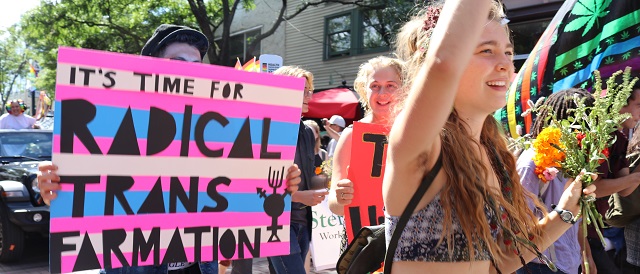
 Health2 days ago
Health2 days agoPrivate Footage Reveals Leading Medical Org’s Efforts To ‘Normalize’ Gender Ideology
-

 Alberta2 days ago
Alberta2 days agoRed Deer Hospital Lottery – Second Chance Early Bird Prize!!!
-

 Alberta19 hours ago
Alberta19 hours ago30 million contraband cigarettes valued at $25 million dollars seized in Alberta
-

 armed forces2 days ago
armed forces2 days agoTrudeau government has spent $10 million promoting DEI in the military as recruitment flounders
-
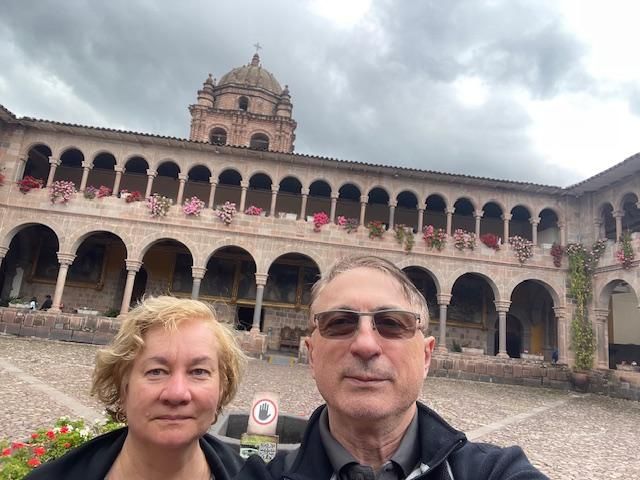
 COVID-192 days ago
COVID-192 days agoMore victories for freedom as ArriveCAN charges dropped and fines reduced
-
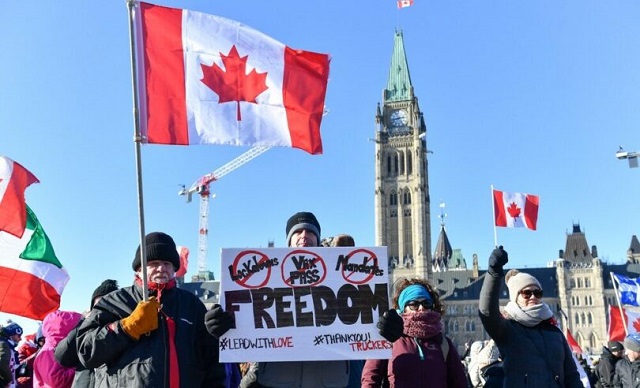
 COVID-192 days ago
COVID-192 days agoTrudeau government only sought legal advice after Emergencies Act was invoked, records indicate
-

 Alberta2 days ago
Alberta2 days agoProvince announces next step to revamped health care system




